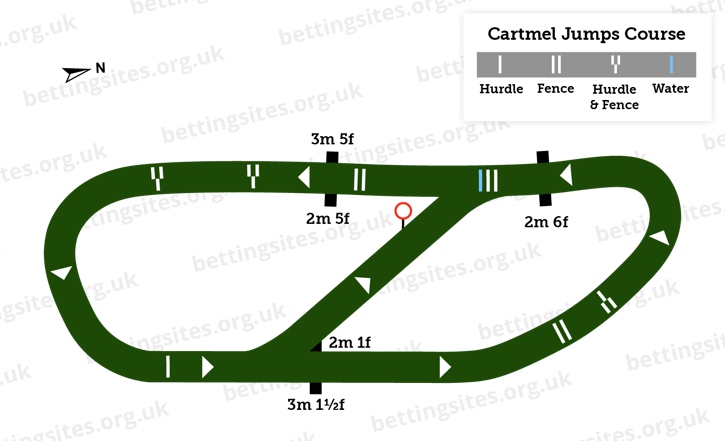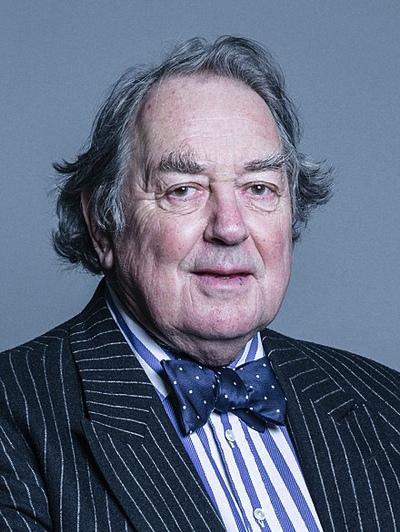Cartmel Racecourse Guide

It’s not often that a village boasts its own racecourse but Cartmel is one of the few that do. The quaint Cumbrian community lies south of the Lake District and provides racegoers with a very relaxed racing environment.
The size of the racecourse is reflected in how many meetings it has per year. There are typically nine racedays split across four meetings and these usually take place between May and August.
Jump to: Course | Races | Useful Info | History
Map
The Course

Despite hosting all its races in the spring/summer, Cartmel only features National Hunt racing, giving runners the chance for some out of season practice. The track itself resembles that of a figure of eight and the middle intersection is where the finishing post lies. Runners have just over four furlongs between the final fence and the finish, making it the longest run-in in the country. This often means the lead is very liable to change hands in the final stages as some runners set off on their run to home too soon.
With only six fences or four hurdles to be tackled around a track a little over nine furlongs, the emphasis isn’t on jumping at Cartmel. The obstacles they do have however are stiff and are placed in what is a narrow track. The left handed bends are tight so horses need to be handy around them especially as the shortness of the course means the bends come at you again fairly quickly. It’s not the easiest place to ride and course specialists, who are usually front runners, regularly emerge as a result.
Major Races
It’s fair to say that Cartmel doesn’t hold any major races as such but it does have a couple of events that it values highly, even if they aren’t that well known at a national level. The first of them is the Grand Veterans Chase which has attracted some useful stayers in the past, some of whom go on to compete in the Grand National at Aintree. Another of Cartmel’s biggest races is July’s Cumbria Crystal Hurdle Race which carries a fairly handsome prize purse of £26,000, making it the most valuable race at the course.
Visiting

If you have always fancied having a barbeque while watching the racing then there isn’t anywhere better than Cartmel which has its own ‘Barbecue Meeting’ in July.
Useful Info
Dress Code
Smart casual dress is advised in the Paddock Enclosure and especially in the restaurant areas. Elsewhere things are more informal and casual wear is fine. In warm weather, shorts and a t-shirt are perfectly acceptable.
Ticket Prices
Ticket prices at Cartmel are the same for every fixture and begin at £13 for seniors (over 60s) and £15 for adults in the Course Enclosure. For the slightly more formal Paddock Enclosure, admission costs £20 for seniors and £24 for adults. The prices quoted above are for tickets purchased in advance and a £2.50 booking fee on the total order will apply.
If you choose to buy on the day then each ticket is £4 more expensive than the advance price. Many racegoers choose to erect gazebos at Cartmel and to do so a fee of £15 will need to be paid. Restaurant packages begin at £89 per person (including admission) and early booking is recommended.
Membership
Annual badge membership at Cartmel costs £135 and gives you access to 45 reciprocal meetings that take place year round on top of Cartmel’s nine. You’ll also be able to park in the Paddock Enclosure, take a seat in the club tent with its bar facilities and watch the racing in an exclusive viewing area.
Getting There
Given the fairly remote location of Cartmel, many choose to drive there and the raceday traffic mean it’s best to set off in plenty of time. Public transport is still an option though and it involves getting the train to either Cark-in-Cartmel or Grange-over-Sands Station (direct trains from Preston) and then catching the raceday bus service.
Parking
Limited parking in the Paddock Enclosure is available for £6 on a first come, first served basis and the same price applies for parking in the Couse Enclosure. Parking inside the course, next to the rail of the home-straight is another option but is more expensive at £20 per vehicle. Free parking spots are often available too and can be found just outside the course.
History

There is plenty of reason to think racing took place at Cartmel as early as the 15th century but the oldest piece of evidence discovered is a written account produced in 1856. In the early days, the course held flat racing but by the start of the 20th century it had made the switch and became a jumps only course.
The Pain Family
For decades, racing took place just once a year, on Whit Monday. Eventually though, the bank holiday meeting was joined by a Saturday fixture and then in 1960’s by an August meeting. The expansion after the war is thanks to the efforts of local landowners and the Pain family, helped out by people such as George Dickinson, son of Gold Cup winning trainer, Michael.
One member of the Pain family, Colonel Davy Pain along with the Course Clerk of the day, Tim Riley, also helped turn Cartmel from an amateur course into a professional one during the 1960s. As a result of their work, aggregate attendances rose to levels rivalling Cheltenham and Aintree while the course still maintained its friendly and fun atmosphere.
Hugh Cavendish
The course enjoyed another boost when the enthusiastic Hugh Cavendish, a member of the family that owns the land, became a director of the racecourse in 1974. Cavendish’s Holker Estate bought out the previous course management in 1988 and has since worked hard to improve facilities while maintaining Cartmel’s special and unique charm.
Improvements
Some of the improvements include a more robust irrigation system and a new Grandstand that replaced the old one, which was demolished in 2004. The replacement Grandstand provides high class facilities for spectators and jockeys alike plus it has restaurant and hospitality features that were not present before.

